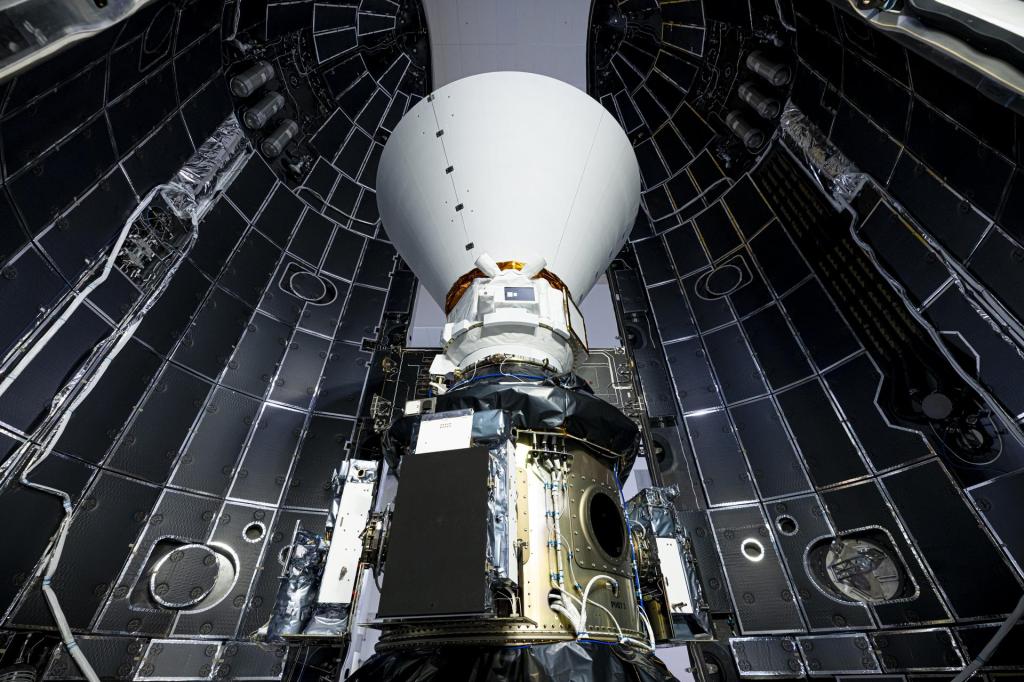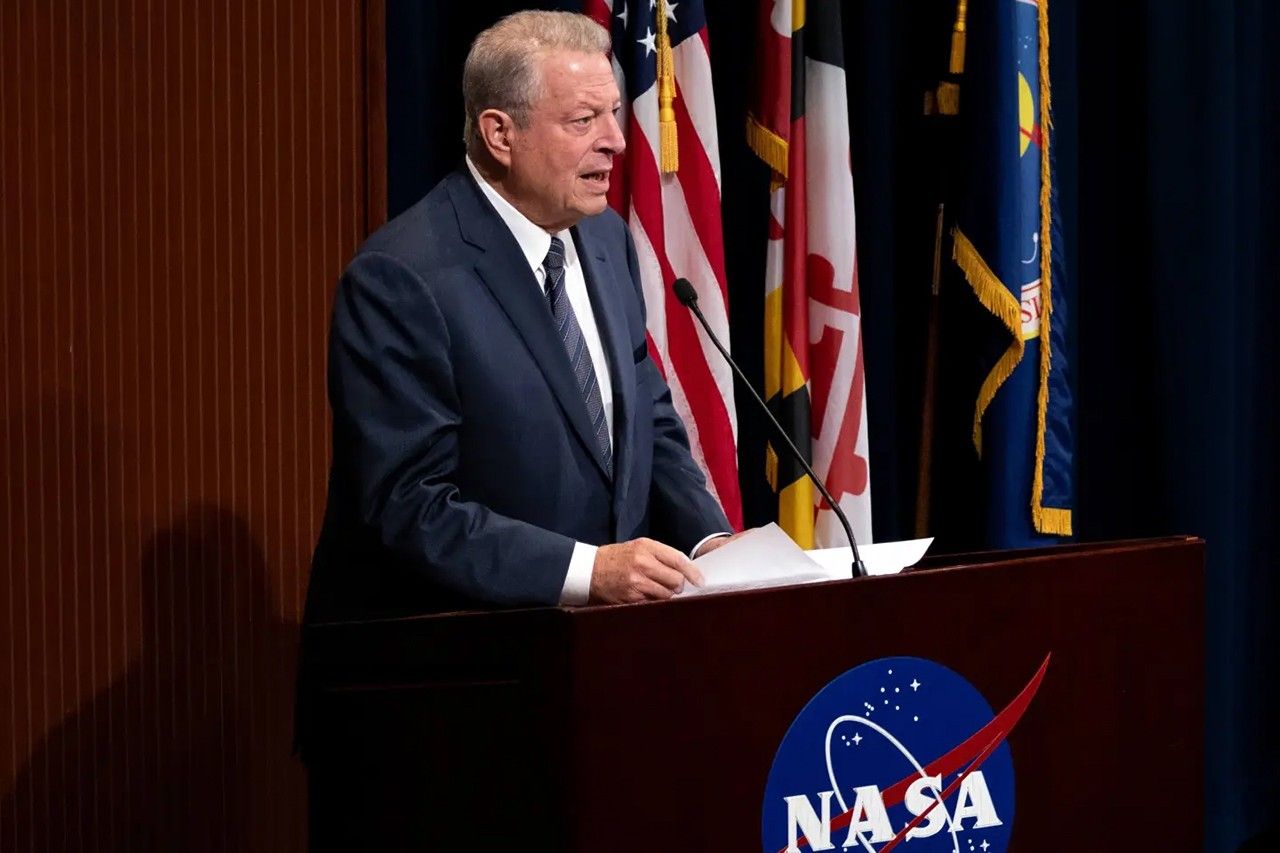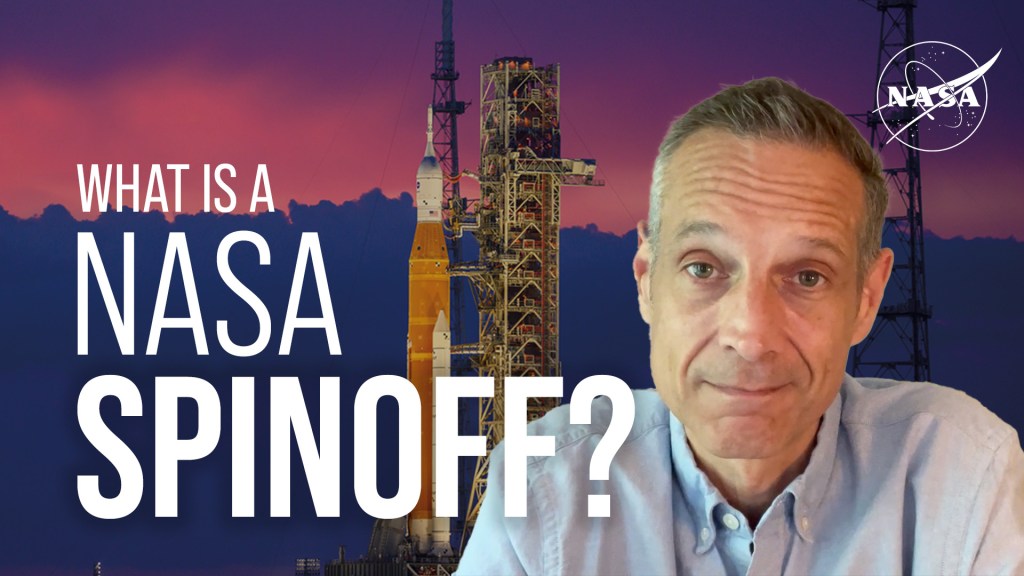5:32 p.m. Eastern Time on June 18, 2019, marks 10 years since the launch of the Lunar Reconnaissance Orbiter (LRO). Its contributions to the fields of lunar science and exploration are unmatched: it has provided the largest volume of data ever collected by a planetary science mission.
The diverse suite of instruments aboard LRO include a laser altimeter that fires pulses of light about 28 times per second, creating one of the most accurate topographic maps of any celestial body. LRO measured the coldest known temperatures in the solar system at the Moon’s poles. Observations of tectonic features across the lunar surface indicated the Moon’s gradual shrinkage — LRO showed us not a dead but rather a dynamic and intriguing Moon.
Credits: NASA’s Goddard Space Flight Center
This video is public domain and can be downloaded from Goddard’s Scientific Visualization Studio.
LRO’s original mission duration was supposed to be one to two years, not 10. “We’ve just submitted our fourth extended mission proposal,” said Noah Petro, project scientist of LRO at NASA’s Goddard Space Flight Center in Greenbelt, Maryland. “With the national focus on the Moon as part of NASA’s Moon to Mars strategy, the data from LRO has been instrumental in Artemis planning and the mission will continue to be a major player going forward in finding more landing sites for humans and robotic explorers. The work that we’re doing is meaningful to the science community, to NASA and to the world.”
The Allure of the Moon
In the months leading up to its launch, LRO received submissions of over a million names as part of an initiative to involve the public in NASA’s return to the Moon. The names, encoded on a microchip, launched with LRO. “It gave people a sense of not just belonging but also of being part of a mission,” Petro said.
Why does Earth’s largest satellite have such a widespread impact upon human imaginations? Beyond the invaluable science and data that LRO gave and continues to give to benefit the onward march of scientific advancement, LRO personifies the investigation of all that is utterly extraordinary about the Moon.
As part of NASA’s 60th anniversary celebration last year, the National Symphony Orchestra played Claude Debussy’s “Clair de Lune” at the Kennedy Center in Washington set to projections of digital images of a lunar day. Science visualizer Ernie Wright, also of Goddard, created this breathtaking view of the Moon’s landscape entirely with LRO data.
The stunning video produced a palpable reaction among those who were at the live performance. “People came up to me during the intermission and asked if I was the photographer,” Wright said. “They didn’t understand completely what I’d made, but they had an emotional reaction to the visual and the way it was combined with the music.”
Wright has been fascinated by the Moon since he saw, live on television, the first humans to step foot on the Moon with the Apollo 11 mission. His connection to the Moon persevered for decades. “I feel especially lucky to be specifically involved with LRO and with data rendering of the Moon because the lunar landing was my first memory of a major space event,” he said. A return to the Moon could inspire a new generation of people motivated, like Ernie Wright, by their specific lunar connection.
LRO’s Figurative Shortening of the Lunar Distance
LRO is a major source of information about the moon for NASA. “When they want someone to talk about the Moon, they call the LRO team,” Petro said. “LRO’s continuation is a direct result of NASA’s interest in the Moon.”
NASA is obviously not the only entity with an interest in the Moon — yet one particular factor seems to shape humanity’s fascination.
“The Moon is very accessible,” said Molly Wasser, planetary science and LRO digital media lead from Goddard. “Anyone can see it, no matter where you are — from the brightest cities to the most remote communities. It’s a way to introduce children to space since little kids can see it and observe it changing over time. There’s something very romantic about it. Everyone loves the Moon.”
The rise of social media over the span of LRO’s lifetime further satiates the public desire for lunar information, but images get the most attention. Having collected over a petabyte (one billion megabytes) of data, LRO has millions of photos of stark geological features lit sharply by unfiltered sunlight. “That content gets the most traction,” Wasser said.
The Moon is visible and it is the largest object in Earth’s night sky. “The Moon has that immediacy,” Petro said. “There’s a connection that people can have which puts it at the forefront of our consciousness.” Even if they are unaware of the mission, LRO brings the Moon to humans in detail precise enough to see the sites of previous lunar missions — a feat beyond impossible for the naked eye.
Apollo, LRO and Artemis
The Moon’s scientific value is not to be understated. The history of the solar system’s evolution is almost indelibly pounded into the lunar surface, providing data over billions of years that mirrors Earth’s history. The Moon exists without the protective effects of an atmosphere or the erasure of geological history as rocks cycle through the processes of plate tectonics.
“We use the Moon as a template for understanding how any solid object in the solar system formed, and by extension, solid objects anywhere in the universe,” Petro said. “There’s an important reason why we study the Moon — it’s not only the Moon for the Moon’s sake. It’s an extension of the Earth.”
Observation of the Moon long predates LRO and Apollo. “So many people don’t notice it or think anything of it,” Petro said. “But the Moon is a part of our consciousness.” The Moon, however, isn’t merely ingrained into cultural memory: it is also part of humanity’s future.
NASA recently announced its commitment to return to the Moon by 2024 with the Artemis program. Named for the mythological Greek Moon goddess and twin of Apollo, Artemis carries humanity back to our largest satellite — this time, for good — before we launch to Mars and to the unexplored beyond.
By Tamsyn Brann
NASA’s Goddard Space Flight Center in Greenbelt, Md.




























